Yes, I successfully sanded my bamboo floors. Use fine-grit sandpaper, and be gentle to avoid splintering. Finish with a quality sealant. Professional advice helps ensure a smooth process and longevity.
Unveiling the mystery behind bamboo floors and their sanding potential! As homeowners seek eco-friendly alternatives, bamboo flooring has gained popularity. But can you sand bamboo floors without causing damage? Join me on a journey through my real-life experience to discover the dos and don'ts of sanding bamboo. From preserving its natural beauty to tackling imperfections, let's explore the ins and outs of revitalizing your bamboo floors. Get ready to transform your living space with the ultimate guide on whether or not you can sand bamboo floors!
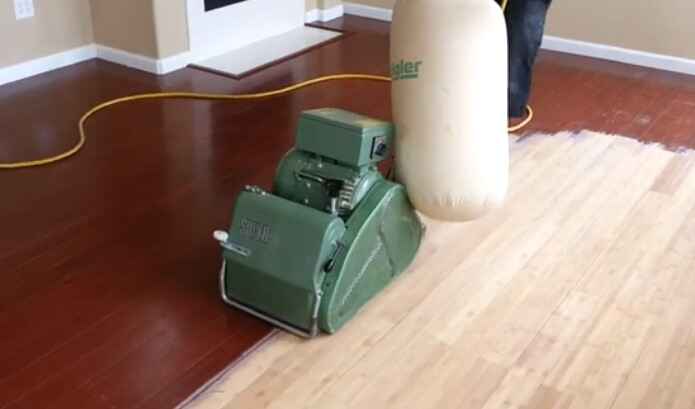
Sanding bamboo floors is a maintenance task that should be done when the floors show signs of wear and tear or damage. Here are some indicators that can help you determine when it's time to sand your bamboo floors:
Visible Wear and Tear:
Look for visible signs of wear, such as scratches, scuffs, or dents on the surface of the bamboo flooring. If these marks are widespread and detract from the appearance of the floor, it may be time to sand.
Uneven Surface:
If your bamboo floor has developed an uneven surface due to wear or moisture damage, sanding can help to level it out and restore its smoothness.
Fading or Discoloration:
Over time, bamboo flooring can fade or become discolored, especially in areas with high foot traffic or exposure to sunlight. Sanding can remove the top layer of finish and stain, allowing you to refinish the floor and restore its original color.
Deep Stains or Water Damage:
If your bamboo floor has deep stains or areas of water damage that cannot be removed through regular cleaning or spot treatments, sanding may be necessary to eliminate these imperfections.
Finish Wearing Off:
The finish on bamboo flooring can wear off over time, leaving the bamboo vulnerable to damage. If you notice that the finish is thinning or peeling in areas, it may be time to sand and refinish the entire floor.
Rough Texture:
If the bamboo flooring feels rough to the touch due to wear or surface damage, sanding can smooth out the texture and make it more comfortable to walk on.
Squeaking or Creaking:
If your bamboo floor starts to make noises when walked upon, it could indicate that the floorboards have shifted or become loose. Sanding may be necessary to fix the problem and secure the floorboards.
It's important to note that bamboo flooring can typically be sanded and refinished a limited number of times, depending on the thickness of the wear layer. Thicker wear layers can withstand more sanding, while thinner ones may have a more limited lifespan. Before sanding your bamboo floors, check the manufacturer's recommendations and warranty information, as excessive sanding may void the warranty.
Editor's Tip:
If you're unsure whether it's time to sand your bamboo floors or how to proceed with the process, it's a good idea to consult with a professional flooring contractor who can assess the condition of your floors and provide guidance on the best course of action.
How often do you need to refinish bamboo floors?
Bamboo floors must be refinished every few years, depending on how much traffic they endure.
If your bamboo floor is in a high-traffic area, it will need to be refinished more often than in a low-traffic area. The finish on your floor will also affect how often you'll need to refinish it; if you have a glossy finish, it will show scratches and scuffs more easily than a matte finish.
I would recommend refinishing bamboo floors every 3-5 years.
How long does it take to sand bamboo floors?
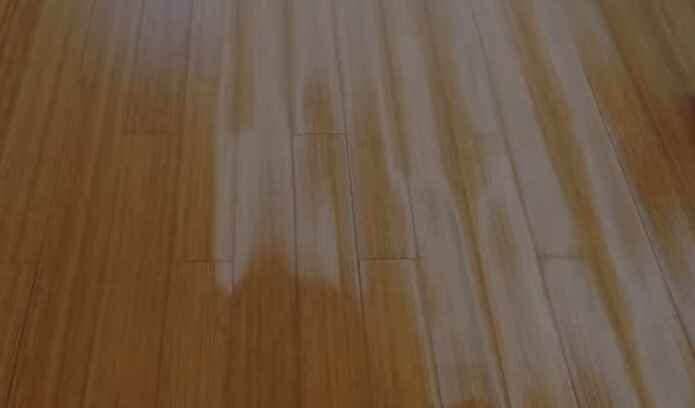
It can take anywhere from 2 to 4 hours to sand bamboo floors, depending on the condition of the floor.
If the floor is in good condition, sanding will take less time. However, if there are a lot of scratches or other damage, it will take longer.
How much does it cost to sand bamboo floors?
It typically costs around $3 to sand a square foot of bamboo flooring. However, the cost may vary depending on the size and complexity of the job.
If you want to have your bamboo flooring sanded, it's important to hire a professional with experience with this type of flooring. Trying to do it yourself could lead to further damage and a higher overall cost.
How to sand bamboo floors?
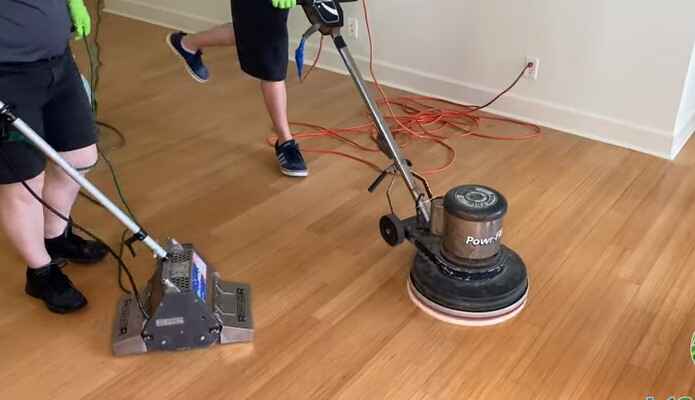
Sanding a bamboo floor is a job that must be done with care and precision to ensure the best results. The process involves more than just running a sander across the floor's surface; it takes understanding different methods, tools, and safety precautions. With this step-by-step guide, you'll learn how to sand a bamboo floor like a professional.
1. Preparation
Before you start sanding, it's essential to ensure the room is prepared for the job. Move all furniture and other items out of the way, including rugs and mats. Vacuum away any dirt or debris on the floor before beginning. It's also recommended to use dust sheets to help contain the mess.
2. Choose the Right Sandpaper
When sanding a bamboo floor, choosing the right sandpaper for the job is essential. Some types of sandpaper can be too abrasive and cause damage to bamboo floors, so you'll want to select one with a medium-grade grit explicitly designed for wood floors. Talk to your local hardware store or flooring supplier for advice on which type will work best.
3. Sand in Two Directions
Start by sanding the floor in horizontal and vertical directions using an orbital sander with a vacuum attachment if possible. This helps to ensure that all surfaces are even, as well as minimize the amount of dust created. Move slowly and use overlapping circles to achieve an even finish.
4. Change the Sandpaper
Once you've finished sanding in two directions, it's time to change the sandpaper grit from medium-grade to finer. This will help to remove any scratches or imperfections that may have been left behind by the previous sandpaper and create a smoother surface overall. Again, move slowly and use overlapping circles to ensure an even finish.
5. Vacuum Away Dust & Debris
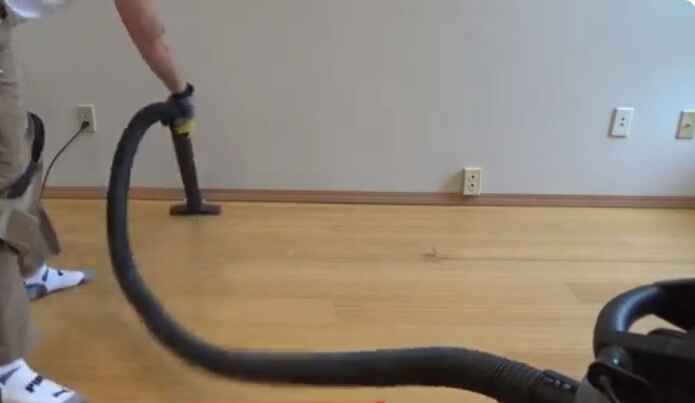
When you've finished sanding with the final grit paper, you'll want to vacuum up any dust or debris that has built up on the floor. This helps keep your work area clean as well as reduce the risk of breathing in any particles that may still be lingering in the air.
6. Apply finish
Once you've finished sanding and vacuuming, it's time to apply a finish to your bamboo floor. Use a water-based polyurethane finish for best results, as this type is less likely to cause discoloration or yellowing over time. Follow manufacturer instructions on how to mix and apply the product correctly for optimal results.
With these steps, you can now sand a bamboo floor like a professional! Remember - safety is always crucial when handling tools and equipment, so ensure you have the proper protective gear before beginning any project.
A little preparation and care will go a long way in ensuring you get the best results.
What are the challenges of sanding bamboo floors?
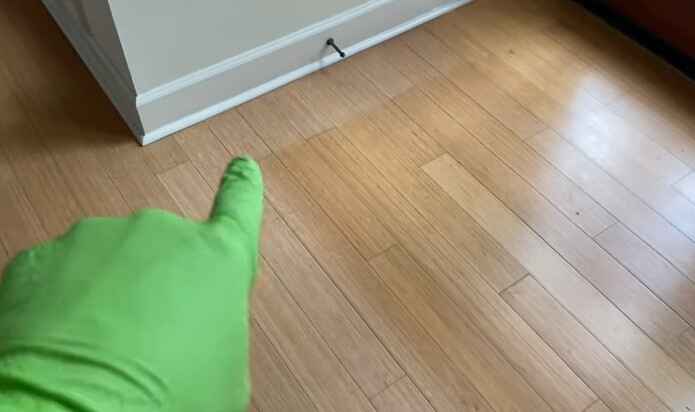
Sanding bamboo floors is a tricky task, but with the proper preparation and knowledge, it can be completed successfully. There are five main challenges to consider when sanding bamboo floors.
1: Choosing the Right Sandpaper Grit and Machine
The first challenge is choosing the correct sandpaper grit and the right machine. Coarse grits should be used to remove deep scratches, while finer grits are best for finishing. When selecting a sander, you want one that can move quickly over the bamboo floor's surface without creating too much dust.
2: Avoiding Irregularities
Another challenge is avoiding irregularities in the sanding process. To get an even finish, it helps to use several pieces of sandpaper with different grains or start with coarse paper and then work your way up to finer ones. Additionally, it's important to keep your sander moving in straight lines at all times and ensure that enough pressure is applied to eliminate all scratches.
3: Removing Old Finish
If sanding an older floor, you may need to remove the old finish first. This can be done with a chemical stripper or by using a sander. However, it's important to remove the old finish before beginning the sanding process. Otherwise, uneven results could occur due to an unequal distribution of pressure.
4: Finishing Edges and Corners
Sanding edges and corners can be difficult because they are hard to reach with a standard sander. When attempting this task, using a sanding block or a rotary sander with a smaller head can be helpful. It's also important to apply even pressure and move the tool in a circular motion to ensure an even finish.
5: Clean Up
The final challenge is clean up. After sanding, it's important to remove all the dust and debris accumulated on the floor. This can be done with a vacuum cleaner, broom, and damp cloth. Once the area is clean, you can apply a finishing product like stain or sealer to protect the wood.
What type of floor sander should you use on bamboo floors?
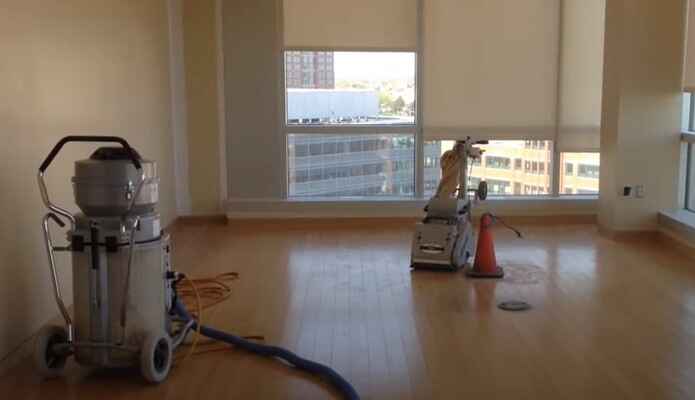
When sanding bamboo floors, a drum sander is the preferred option. Drum sanders are designed for hardwood and engineered wood floors, but they also work just as well for bamboo flooring. They provide faster results than orbital sanders, with less effort needed from the user.
However, caution should always be taken while using a drum sander, as they are powerful machines that must be handled with care.
What are some tips for sanding bamboo floors?
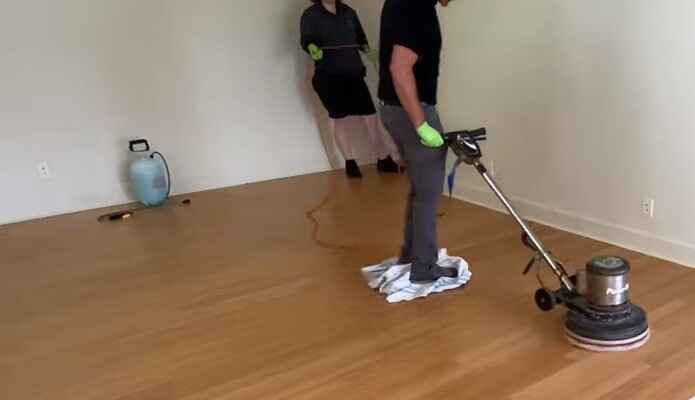
When it comes to sanding bamboo floors, preparation is critical. Following these five tips will help make sure that you get the best possible results from your sanding project.
1. Use the Right Grit Sandpaper
Start with a 60-grit paper and finish with an 80-grit paper for optimal results. Grits between 100 to 120 are best for floors that only need minimal sanding. Abrasive belts and discs can also be used to get a smooth finish.
2. Prepare the Room
Clear out all furniture and other items in the room before sanding. Make sure to use drop cloths to cover any remaining items that cannot be removed. Then, thoroughly vacuum and clean the entire room before you begin sanding.
3. Move With the Grain
Sanding with the wood grain helps prevent scratches and damage to your bamboo boards. As you move across each board, ensure a consistent pattern and always use light pressure so that you don't cause damage to your floor.
4. Take Breaks
To ensure an even finish, it's essential to take frequent breaks during the sanding process. This allows you to check for any missed spots or areas of uneven sanding, which can create an unappealing look when finished.
5. Vacuum After Sanding
Once you have finished sanding, use a vacuum to remove any dust or debris left behind. This will help ensure that your floor is clean and ready for finishing. You can also wipe down the boards with a damp cloth to make sure all particles are removed.
By following these tips, you can be sure that your bamboo floors will look beautiful and last for years!
Final Words
Taking on the task of sanding your bamboo floor is a daunting and labor-intensive project. Knowing the right products, equipping yourself with the necessary knowledge, and taking the proper steps to ensure that your floor isn't damaged during the project is essential for success.
If, at any point in time, you feel overwhelmed or ill-equipped for this project, consider enlisting professional help. To sand your bamboo floor correctly, knowing what finish is present, what grit sandpaper to use, preparation before starting, methods of sanding, and selecting appropriate protective coatings upon completion is essential.
If all the steps are followed accordingly, you should have no problem recovering and reconditioning your beautiful bamboo floor back to its natural beautiful state.